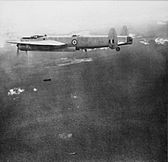Malayan Emergency facts for kids
Quick facts for kids Malayan EmergencyDarurat Malaya 馬來亞緊急狀態 மலாயா அவசரகாலம் |
|||||||
|---|---|---|---|---|---|---|---|
| Part of the decolonization of Asia and Cold War in Asia | |||||||
|
|||||||
|
|||||||
| Belligerents | |||||||
|
British Empire and Commonwealth forces:
Supported by: (Thai–Malaysian border) |
Communist forces:
|
||||||
| Commanders and leaders | |||||||
|
|
|
||||||
| Strength | |||||||
|
Over 451,000 troops.
|
Over 7,000 troops.
|
||||||
| Casualties and losses | |||||||
| 6,710 killed 1,289 wounded 1,287 captured 2,702 surrendered |
|||||||
| Civilians killed: 2,478 Civilians missing: 810 Civilian casualties: 5,000+ Total killed: 11,107 |
|||||||
The Malayan Emergency, also known as the Anti–British National Liberation War (1948–1960), was a guerrilla war fought in British Malaya between communist pro-independence fighters of the Malayan National Liberation Army (MNLA) and the military forces of the Federation of Malaya, British Empire and Commonwealth. The communists fought to win independence for Malaya from the British Empire and to establish a socialist economy, while the Malayan Federation and Commonwealth forces fought to combat communism and protect British economic and colonial interests. The term "Emergency" was used by the British to characterise the conflict in order to avoid referring to it as a war, because London-based insurers would not pay out in instances of civil wars.
The war began on 17 June 1948, after Britain declared a state of emergency in Malaya following attacks on plantations, which in turn were revenge attacks for the killing of left-wing activists. Leader of the Malayan Communist Party (MCP) Chin Peng and his allies fled into the jungles and formed the MNLA to wage a war for national liberation against British colonial rule. Many MNLA fighters were veterans of the Malayan Peoples' Anti-Japanese Army (MPAJA), a communist guerrilla army previously trained, armed and funded by the British to fight against Japan during World War II. The communists gained support from a high number of civilians, mainly those from the Chinese community. The communists' belief in class consciousness, and both ethnic and gender equality, inspired many women and indigenous people to join both the MNLA and its undercover supply network the Min Yuen. Additionally, hundreds of former Japanese soldiers joined the MNLA. After establishing a series of jungle bases the MNLA began raiding British colonial police and military installations. Mines, plantations, and trains were attacked by the MNLA to gain independence for Malaya by bankrupting the British occupation.
The British attempted to starve the MNLA using scorched earth policies through food rationing, killing livestock, and aerial spraying of the herbicide Agent Orange. British attempts to defeat the communists included extrajudicial killings of unarmed villagers, in violation of the Geneva Conventions. The most infamous example is the Batang Kali massacre, which the press has referred to as "Britain's Mỹ Lai". The Briggs Plan forcibly relocated between 400,000 to 1,000,000 civilians into concentration camps called "New villages". Many Orang Asli indigenous communities were also targeted for internment because the British believed that they were supporting the communists.
Although the emergency was declared over in 1960, communist leader Chin Peng renewed the insurgency against the Malaysian government in 1968. This second phase of the insurgency lasted until 1989.
Legacy
The Indonesia–Malaysia confrontation of 1963–66 arose from tensions between Indonesia and the new British backed Federation of Malaysia that was conceived in the aftermath of the Malayan Emergency.
In the late 1960s, the coverage of the My Lai massacre during the Vietnam War prompted the initiation of investigations in the UK concerning war crimes perpetrated by British forces during the Emergency, such as the Batang Kali massacre. No charges have yet been brought against the British forces involved and the claims have been repeatedly dismissed by the British government as propaganda, despite evidence suggestive of a cover-up.
Following the end of the Malayan Emergency in 1960, the predominantly ethnic Chinese Malayan National Liberation Army, the armed wing of the MCP, retreated to the Malaysian-Thailand border where it regrouped and retrained for future offensives against the Malaysian government. A new phase of communist insurgency began in 1968. It was triggered when the MCP ambushed security forces in Kroh–Betong, in the northern part of Peninsular Malaysia, on 17 June 1968. The new conflict coincided with renewed tensions between ethnic Malays and Chinese following the 13 May Incident of 1969, and the ongoing conflict of the Vietnam War.
Communist leader Chin Peng spent much of the 1990s and early 2000s working to promote his perspective of the Emergency. In a collaboration with Australian academics, he met with historians and former Commonwealth military personnel at a series of meetings which led to the publication of Dialogues with Chin Peng: New Light on the Malayan Communist Party. Peng also travelled to England and teamed up with conservative journalist Ian Ward and his wife Norma Miraflor to write his autobiography Alias Chin Peng: My Side of History.
Many colonial documents, possibly relating to British atrocities in Malaya, were either destroyed or hidden by the British colonial authorities as a part of Operation Legacy. Traces of these documents were rediscovered during a legal battle in 2011.
Images for kids
-
Headline on page 1 of The Straits Times of 1952. Chin Peng: Public Enemy No.1
See also
- Batang Kali massacre
- Battle of Semur River
- Briggs Plan
- British Far East Command
- British war crimes#Malaya
- Bukit Kepong incident
- Chin Peng
- Cold War in Asia
- Communist insurgency in Malaysia (1968–89)
- Far East Strategic Reserve (FESR)
- History of Malaysia
- List of weapons in Malayan Emergency
- Malayan Peoples' Anti-Japanese Army
- New village















